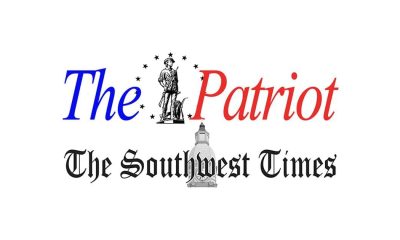Health
Role reversal
“It was so weak it couldn’t pick up its tail,” Elbroch said. “It was dragging through the mud and the water that was out in this field.” A healthy cougar doesn’t drag its tail in the mud. “Meat and food sources have been tested with all negative results,” Itle said in an email. Researchers in […]


“Meat and food sources have been tested with all negative results,” Itle said in an email.
Researchers in the state are racing to learn more about the virus before the next outbreak hits. The U.S. Food and Drug Administration is investigating the Harstine Island outbreak. Possible infection sources include the cats’ food or bird droppings.
There’s still a lot Elbroch and others don’t know, including whether mammals can transfer the form of the virus now circulating on the Washington landscape to each other.
For now, scientists say the risk to orcas appears very low, since, unlike seals, they don’t come ashore, where bird poop accumulates.

A week after that, 20 big cats, including five African servals, four bobcats, four cougars, and two lynxes died from avian flu at the Wild Felid Advocacy Center, a nonprofit sanctuary for displaced wild cats on Harstine Island in South Puget Sound.
RELATED: Bird flu has killed 20 big cats including cougars at a U.S. wildlife sanctuary
The researchers also found 16 dead harbor seals on Rat Island, in the first detection of the highly pathogenic flu in seals on the West Coast of North America.
“Lo and behold, it’s avian flu that killed him, too,” Elbroch said.
“We found two dead cougars. There could be a lot more out there,” Washington Fish and Wildlife Commission member Melanie Rowland said of the secretive big cats.
Heat kills avian flu, but raw food can transmit the disease.
That’s why Mark Elbroch, a big cat expert with the nonprofit Panthera, was alarmed when a game warden called him to see a young male mountain lion, emaciated, on the Olympic Peninsula. It was December, and the big cat was in a cow pasture near Sequim.
To further help cats avoid the deadly flu, experts also recommend avoiding giving them raw food, just as they recommend that people not drink raw milk.
Soon after, another young cougar died.
That raised concerns for other mammals, including the region’s endangered orcas.
Wildlife officials decided to put the cougar, a young male, out of its misery. Elbroch said that was the right decision: “A week later or so, we get the results, and it was avian flu.”
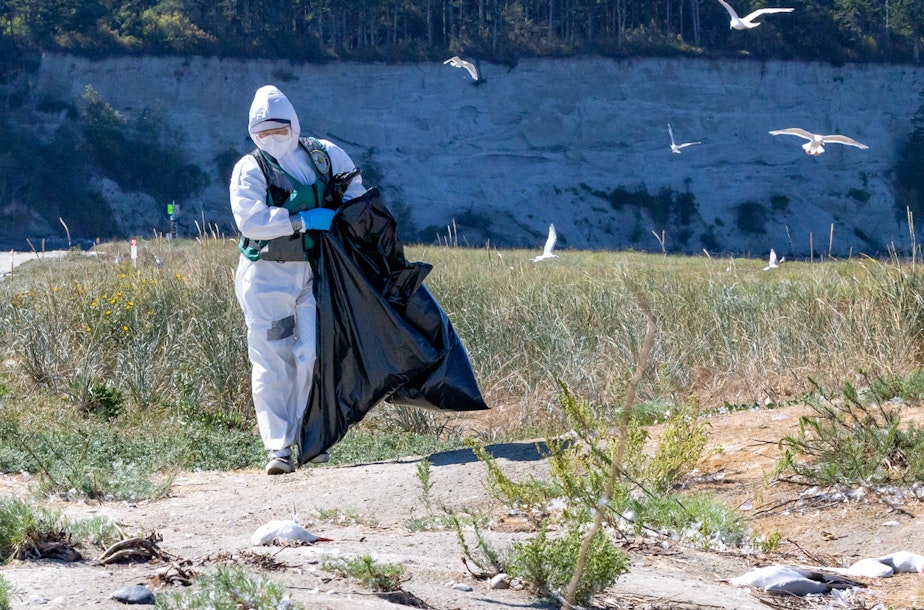
Bird flu has been around a long time, with the first U.S. outbreak hitting East Coast live-bird markets in 1924. It has become a devastating problem for America’s industrial-scale chicken farms in just the past few years.
Scientists think it had not taken a major toll on American wildlife until recently.
But on those big chicken farms, the virus mutated and evolved into something much deadlier for poultry and wildlife alike.
“The risk to wildlife has dramatically increased,” said Katie Haman, a veterinarian with the Washington Department of Fish and Wildlife.
A falcon in Whatcom County became the United States’ first confirmed wild bird to succumb to the highly pathogenic avian influenza in 2012, and major outbreaks hit the state’s wild birds in 2022.
In the summer of 2023, Haman walked down a rocky beach on Rat Island, a half-mile-long wisp of sand and shrubs near Port Townsend and the northeast tip of the Olympic Peninsula. It was teeming with birds.
She was seeing if the major colony of Caspian terns there was infected with avian influenza.
Caspian terns are the world’s biggest tern, easy to spot from a distance by their black caps and almost comically large red bills. They aggressively defend their breeding colonies, like the one on Rat Island, sometimes attacking people who wander too close.
RELATED: Bird flu continues to spread in Washington state. What to know about the virus

Rat Island is closed to the public during breeding season to prevent such hostile encounters.But these feisty feathered friends had no defense against a recent invader. The highly pathogenic H5N1 strain of bird flu tore through the colony.“What we found was a tremendous number of dead birds and sick birds,” Haman said. “It was devastating, to be honest.”To study the massive outbreak, and protect the health of visitors to adjacent Fort Flagler State Park, she and her team collected carcasses.“We were bagging them up in industrial-size waste bags and carrying them off the island by Zodiac,” Haman said. “It was many, many trips back and forth with the Zodiac piled full of garbage bags of carcasses.”They tallied 1,101 dead Caspian tern adults and 520 dead chicks.

In a study published in December, the researchers reported that avian flu had killed more than half the colony’s terns – or one-eighth of all Caspian terns on the West Coast – in a matter of weeks.
Elbroch guessed the cat probably hadn’t eaten in about a month. It was standing in the field in daylight – cougars are normally stealthy and seldom spotted.Gaydos said drawing attention to bird flu, as he and other experts do, is hard.RELATED: First bird flu death reported in the U.S., according to the CDCHere’s what we do know:“So long as there’s no really large active outbreak in the Salish Sea, the [orcas’] risk of exposure is really minimal,” Haman said.“Now, in other places, Peru, it got into sea lions, and it went from one sea lion to the next to the next, and it just killed thousands of them,” Gaydos said.Gaydos said the virus did not spread from mammal to mammal.The scientists believe terns arriving from a colony near the mouth of the Columbia River – where workers have been protecting threatened salmon by making the fish-eating terns nest elsewhere – brought the deadly virus with them.This flu had mutated enough to cause a major outbreak where it hadn’t before.RELATED: Bird flu: The challenges the Trump administration will face
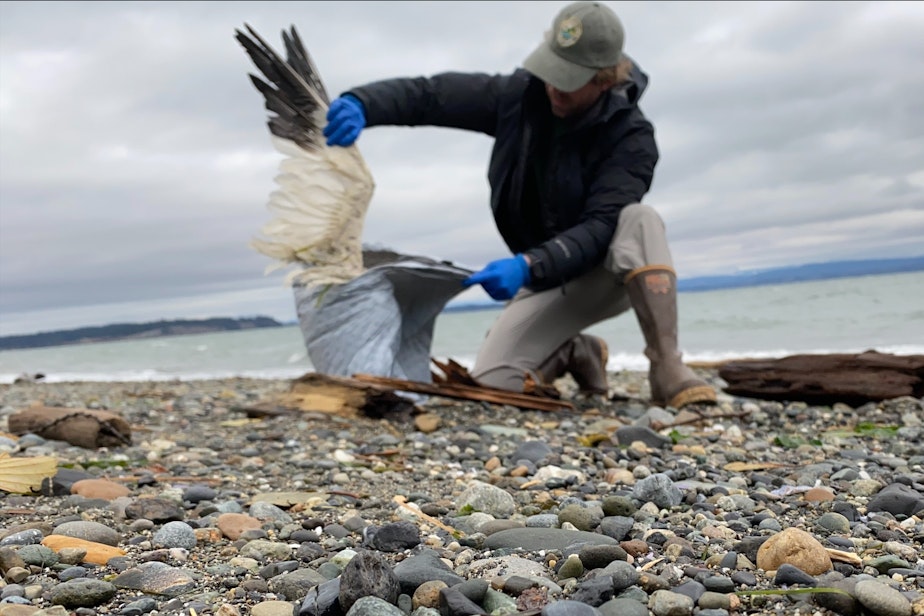
The H5N1 flu has killed thousands of wild geese and ducks in Washington, as well as smaller numbers of eagles, hawks, falcons, owls, ducks, geese, swans, crows, ravens, sparrows, gulls, pelicans, cranes, and shorebirds, according to the U.S. Department of Agriculture.Mammals that have fallen to the avian flu in the Northwest include raccoons, bobcats, coyotes, mice, skunks, and foxes.Wildlife diseases are hard to fight directly. Though an avian flu vaccine exists and has been used on extremely rare California condors, there’s no feasible way to vaccinate or treat large numbers of wild animals.Helping wildlife against other threats they face, like habitat loss, pollution, and predation by introduced species, can boost their odds of survival when disease strikes.“There are other things that we can do to make species more resilient, right? We can increase their habitat quality,” Haman said.Cougar populations in Washington are generally stable, though the estimated 200 isolated cougars of the Olympic Peninsula face risks from their lack of genetic diversity.

Gaydos said one of the best actions to help wildlife is to keep domestic cats indoors.“Your cats are always better off to be inside, right? Cats kill a lot of birds. They could definitely get the virus as well.”RELATED: Bird flu Q&A: What to know to help protect yourself and your pets
“These terns that were resting in places where the seals were resting, they gave the seals the virus,” said Joe Gaydos, a wildlife veterinarian with the nonprofit SeaDoc Society on San Juan Island.“It’s now in our wildlife populations. It’s not just being carried here. It plays out, then it disappears, and then it’s reinvigorated with the next migration of birds,” Elbroch said.Scientists and volunteers with the Olympic Cougar Project said they have the opportunity now to study bird flu in wild animals – to hopefully prevent it from spreading to people.
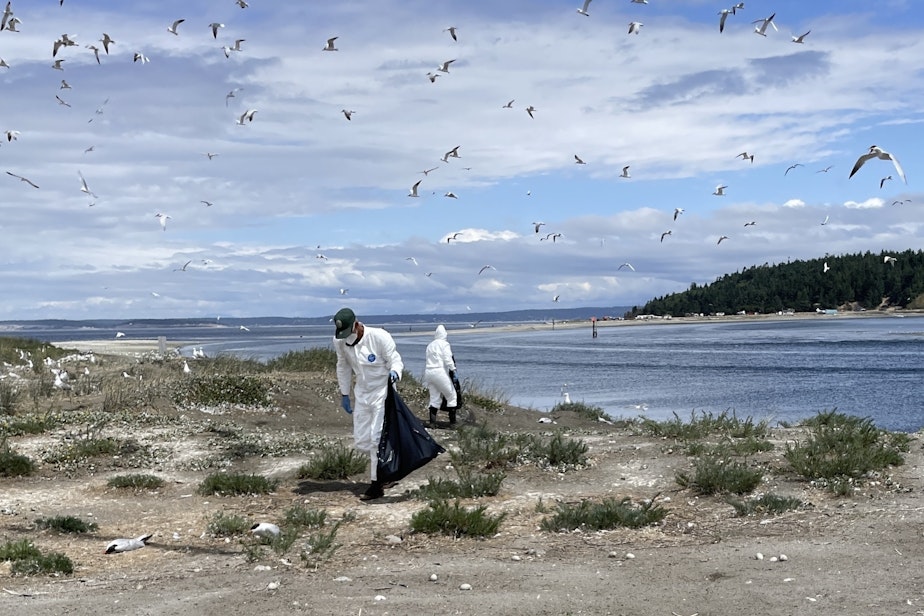
Health
Taylor Priestley earns IWLCA Community Awareness Award
Story Links NORTHBOROUGH, Mass. – The IWLCA (Intercollegiate Women’s Lacrosse Coaches Association) announced Taylor Priestley as one of just three student athletes across collegiate lacrosse to earn the 2025 IWLCA Community Awareness Award. The individual Community Awareness Award recognizes those student-athletes who have contributed significantly to their community in a given academic year. These students have given their time […]
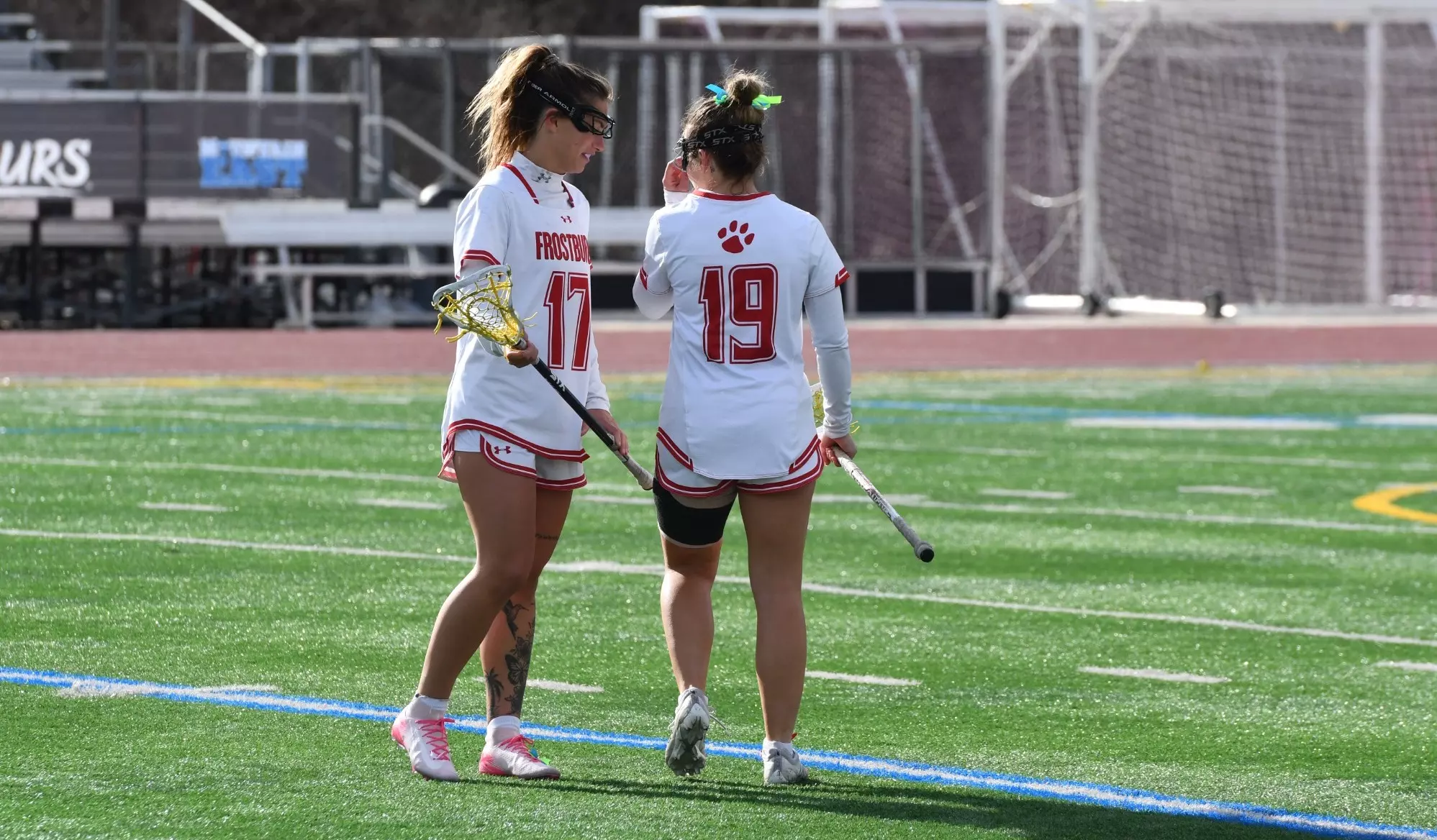

NORTHBOROUGH, Mass. – The IWLCA (Intercollegiate Women’s Lacrosse Coaches Association) announced Taylor Priestley as one of just three student athletes across collegiate lacrosse to earn the 2025 IWLCA Community Awareness Award.
The individual Community Awareness Award recognizes those student-athletes who have contributed significantly to their community in a given academic year. These students have given their time and energy to support and develop athlete-community relations and have distinguished themselves from their peers.
Division II – Taylor Priestley, Northern Michigan University
Priestley, a senior Education major at Northern Michigan University, has earned the Division II Community Awareness Award for her groundbreaking leadership in promoting mental health awareness among student-athletes. Through her tireless work, Taylor has created impactful, sustainable programs that are transforming the campus culture at NMU. Taylor is the founder of the Beyond an Athlete blog, a platform that allows student-athletes to share their mental health journeys and stories in their own words. As co-founder of Cat’s Connect, NMU’s first student-athlete mental health awareness organization, Taylor has connected students with resources from national nonprofits like Hilinski’s Hope, Morgan’s Message, and The Hidden Opponent, while also securing university support and grant funding to expand their reach.
Her leadership has driven major initiatives including Student-Athlete Mental Health Week, QPR suicide prevention training, and multiple mental health awareness games for NMU athletics. She personally organized events like yoga sessions, therapy dog visits, and community service collaborations, all with a focus on wellness and destigmatizing mental health conversations. Taylor also played a key role in organizing a landmark event: “Tyler Talk: A Conversation with the Hilinskis“, which brought the founders of Hilinski’s Hope to NMU for the first time, offering support and education to over 300 athletes, coaches, and local community members.
Balancing all of this during her competitive season, Taylor has demonstrated an unwavering commitment to building a healthier, more compassionate athletic environment. Her passion, initiative, and impact make her a truly deserving recipient of the Community Awareness Award.
The full release from the IWLCA can be found here.
Hear from head coach Lindsey (LeMay) Majkrzak
“I am so proud of and overjoyed for Taylor for receiving this award. There is no one more deserving. She has made it her mission during her time here at NMU to make her community comfortable talking about athlete mental health and confronting their own struggles so that they may seek help.
She made this mission a reality through years of getting involved and working to put events into action that would help spark change. This work started with herself, then spread to our program (coaches included), and then to our athletic department as a whole.”
Community service accomplishments:
Priestley is a co-president of the NMU athlete mental health student organization Cat’s Connect, through this student organization she helped plan and accomplish the following:
– Separated Cats Connect from SAAC (the Student Athletic Advisory Committee) and turned it into an NMU student organization to access greater resources and impact more students.
– Planned and accomplished the first student-athlete mental health week at NMU in tandem with the national student athlete mental health week through the mental health awareness organization Hilinski’s Hope. The NMU student athlete mental health week included a different theme and activity for each day of the week all planned and organized by Cats Connect and SAAC.
– Organized several mental health awareness events at sporting events including Volleyball, Women’s Wrestling and her own team Women’s Lacrosse.
– Organized and accomplished bringing an outside speaker to NMU to speak to the athletic student body, which was one of the original goals of the creation of Cats Connect. The outside org was the Hilinski’s of Hilinski’s Hope. The Hilinskis met with coaches, staff, and community members during their visit to Marquette, and ended their trip with a presentation to student athletes. The event was the first of its kind on campus.
Outside of Cats Connect:
Priestley organized a mental health awareness week for the lacrosse team leading up to our mental health awareness game. Each day, the lacrosse team listened to a presentation about a different mental health organization and the resources it provided. We also completed a unique mental health activity during this week and created an individualized mental health awareness shooting shirt to wear for our mental health awareness game.
Taylor is the multi-year representative of the mental health organization The Hidden Opponent for NMU. Through this role she has been able to provide resources and content on athlete mental health awareness to athletes on her team and throughout NMU athletics.
Taylor created a student athlete mental health awareness blog called “Beyond an Athlete”. This blog has allowed her to give her fellow athletes a platform to tell their stories outside of sport. This blog is posted to the Center of Community and Connection website under “Beyond an Athlete”, and is reposted to the SAAC social media pages.
“Taylor will leave NMU better than she found it when she graduates in December,” added head coach Majkrzak, “and then it will be our job to continue this important work with the tools that she’s left us.”
Hear from Emily Meier – Director of Case Management Services of the NMU CARE Team
CARE stands for “Case Administration and Resource Education,” but in simple terms, the CARE Team is a group of people who are available to support and guide any student at NMU who is going through a difficult time – whether it be academically, emotionally or psychologically.
The CARE Team is different than our Counseling and Consultation Services; CARE Team members work with you using a case management model to help you achieve your desired outcome. Think of them as your personal champion to help guide you through whatever you’re dealing with, while keeping you accountable to the commitment you made to yourself.
You can utilize the CARE Team as little, or as much, as you need! The CARE Team is not a disciplinary entity, it’s a collection of people available to support your wellbeing. Led by Emily Meier and comprised of personnel with expertise in student affairs, academic affairs, human resources, mental and physical health, student conduct and campus safety, the CARE Team is there to address the unique needs and challenges students may face.
“Taylor’s advocacy got Cats Connect off the ground in Winter 2025 as an official student organization that supports students’ complete wellbeing,” adds Meier. “As a co-president, Taylor was instrumental in setting up a QPR training for student athletes, bringing the Hilinski’s Hope speakers to campus, and collaborating with Green Athletes to promote sustainable activities for athletes.
While Cats Connect was under the SAAC leadership board in 2024, Taylor supported her fellow athletes with Student Athlete Mental Health Awareness Week programming and care packages and starting the blog “Beyond an Athlete” to promote more discussion around student athletes’ identity beyond their sport; Taylor passed her blog onto another athlete who will continue Taylor’s mission of giving athletes a voice.
Her planning, dedication, and passion for wellbeing led to Cats Connect to have a monthly focus for events and speakers on each dimension of wellbeing throughout the 2025-26 school year.”
Health
NCAA WOMEN'S LACROSSE
ALBANY, N.Y. — Ava Poupard, a senior at the University at Albany, has been named as one of the four collegiate award recipients for 2025 by the Capital District Sports Women of the Year organization. Poupard, who competes in lacrosse, will be recognized at the Capital District Sports Women of the Year Awards Gala on […]



ALBANY, N.Y. — Ava Poupard, a senior at the University at Albany, has been named as one of the four collegiate award recipients for 2025 by the Capital District Sports Women of the Year organization. Poupard, who competes in lacrosse, will be recognized at the Capital District Sports Women of the Year Awards Gala on […]
Originally Published:
Health
Doctor Reveals 4 Sneaky Reasons You Might Have High Pressure
High blood pressure is a surprisingly common condition, but it’s also one that goes under the radar far too frequently. Also called hypertension, high blood pressure may affect almost half of all adults in the U.S. But many people don’t even know they have the condition. “Blood pressure is one of the most important vital […]


High blood pressure is a surprisingly common condition, but it’s also one that goes under the radar far too frequently.
Also called hypertension, high blood pressure may affect almost half of all adults in the U.S. But many people don’t even know they have the condition.
“Blood pressure is one of the most important vital signs we have,” NBC News medical reporter Dr. Akshay Syal explained on a July 9, 2025, segment on the TODAY show. “Every time you go to a doctor’s office, the reason we check it is because it gives us a little window into your health.”
High blood pressure can come with serious symptoms. And, if left untreated, it also raises your risk for many other conditions down the line, including stroke, heart attack, heart failure and kidney disease.
That’s why it’s important to be aware of your blood pressure numbers and your risks for high blood pressure — even if you don’t think you have hypertension.
Lesser-Known Reasons for High Blood Pressure
Many factors can contribute to an increase in blood pressure, Syal said. That includes genetics, a sedentary lifestyle and high stress levels.
But there are also some risk factors for high blood pressure that aren’t as well known, Syal said.
Sleep apnea
Sleep apnea is a condition that occurs when your airways become blocked during the night, often causing loud snoring along with headaches in the morning, irritability or mood swings, dry mouth when you wake up and other symptoms.
That affects blood pressure because, “at night, if your oxygen levels drop, your heart has to work a little bit harder to get oxygen to those organs,” Syal explained.
He also highlighted these lesser-known contributors to high blood pressure:
- Loneliness
- Pain medication use (particularly non-steroidal anti-inflammatory medications)
- Excessive sugar consumption
How to Manage High Blood Pressure
Normal blood pressure is 120/80, Syal said. “And, honestly, the lower we can get, around 115/75, that’s what we love,” he added. If either of your blood pressure numbers is higher than 120/80, “you really want to talk to your doctor about controlling it,” Syal noted.
“Every organ system in our bodies has arteries and veins,” Syal said. “And that means our blood pressure leads to all of these organs.” So, if you think you might have high blood pressure, “You really want to get this under control as soon as you can,” Syal said.
That may sound scary, but with a doctor’s guidance, there are concrete ways to get your blood pressure on the right track.
“When we have patients in our office, we say, ‘Your blood pressure is high, but there’s something you can do about it,’” Syal said.
Those strategies might include increasing your physical activity, limiting ultra-processed or sugary foods, reducing sodium in your diet, implementing stress management techniques and prioritizing getting good sleep.
Some people may also benefit from medication to manage their blood pressure. Your doctor might also recommend monitoring your blood pressure at home to keep tabs on how you’re improving.
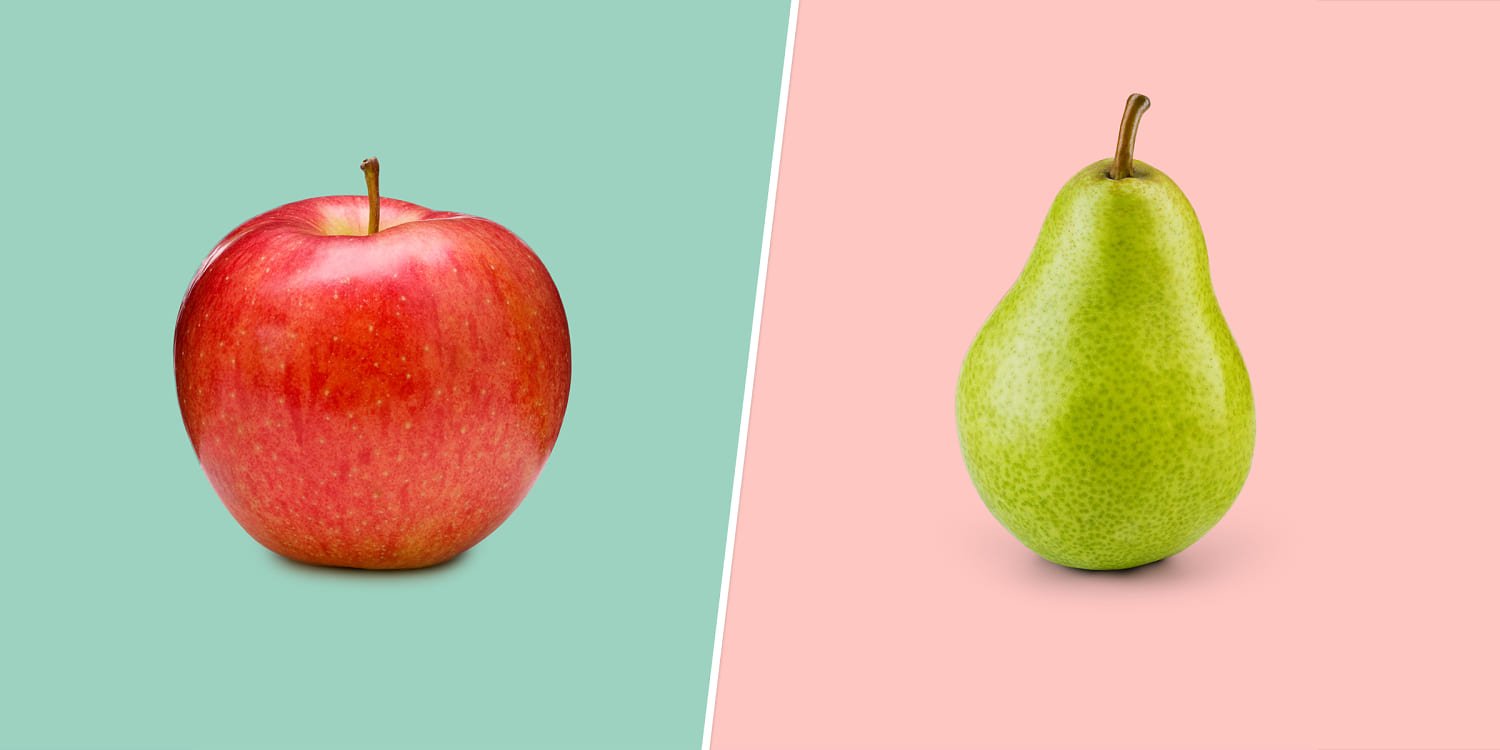
Health
Congratulations Pouring In For U.S. Tennis Star Amanda Anisimova
Congratulations Pouring In For U.S. Tennis Star Amanda Anisimova originally appeared on The Spun. In 2023, Amanda Anisimova took a break from professional tennis to focus on her mental health. Fast forward to this Tuesday, and she picked up the biggest win of her career. Advertisement Advertisement Advertisement On Tuesday afternoon, Anisimova defeated Anastasia Pavlyuchenkova 6-1, […]

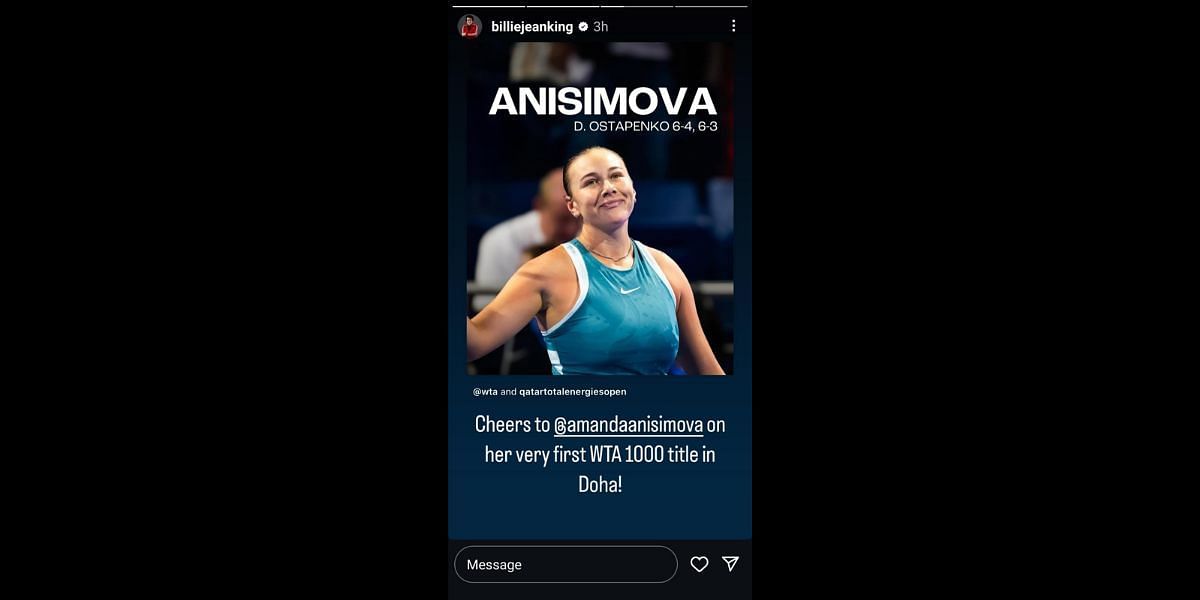
Congratulations Pouring In For U.S. Tennis Star Amanda Anisimova originally appeared on The Spun.
In 2023, Amanda Anisimova took a break from professional tennis to focus on her mental health. Fast forward to this Tuesday, and she picked up the biggest win of her career.
Advertisement
On Tuesday afternoon, Anisimova defeated Anastasia Pavlyuchenkova 6-1, 7-6 (9) to become a 2025 Wimbledon semifinalist. This is the first time in her career that she has reached the semifinals of a Grand Slam tournament. Additionally, she became the youngest American Wimbledon semifinalist since Serena Williams in 2004.
At 23 years old, Anisimova has proven she’s a legit threat to become a Grand Slam champion.
“I mean, its been an extraordinary year for me. So many highs. It’s just been such a ride, and I’ve been enjoying every step of the way,” Anisimova said following her win over Pavlyuchenkova. “Even times like today, when you’re not sure you’re going to cross the finish line, I keep reminding myself to enjoy the moment.”

Jul 6, 2025; Wimbledon, United Kingdom; Amanda Anisimova (USA) waves to the crowd after her match against Linda Noskova (CZE)(not pictured) on day seven of The Championships Wimbledon 2025 at All England Lawn Tennis and Croquet Club.Geoff Burke-Imagn Images.
Over the past few hours, tennis fans in the United States have celebrated Anisimova’s incredible comeback.
Advertisement
“What an accomplishment. Congrats,” one person said following Anisimova’s win.
“Mental health breaks aren’t failures – they’re strategic resets. Amanda stepped away to rebuild her foundation, not her ranking. That’s championship thinking,” a second person wrote.
“From rock bottom to Centre Court. Amanda Anisimova just turned a comeback into a statement. Rankings don’t measure heart,” another fan said.
“I love this! It’s so essential for everyone to take mental health seriously, even if you’re an athlete. Great job, Amanda,” a fourth person commented.
Advertisement
Next up for Anisimova is a showdown with world No. 1 Aryna Sabalenka. They faced off in the French Open in June. Sabalenka won that match 7-5, 6-3.
We’ll see if Anisimova continues her magical run at Wimbledon and books a spot in the final.
Related: Tennis Star Aryna Sabalenka Turns Heads In Stunning Vacation Photos
Congratulations Pouring In For U.S. Tennis Star Amanda Anisimova first appeared on The Spun on Jul 9, 2025
This story was originally reported by The Spun on Jul 9, 2025, where it first appeared.
Health
Mental health evaluation ordered for Venezuelan man convicted of killing Laken Riley
ATLANTA (Atlanta News First/Gray News) – The Venezuelan man convicted of killing a former University of Georgia student and whose trial set off a national immigration debate during a presidential election year has been ordered to undergo a mental health examination. Athens-Clarke County Superior Court Judge Patrick Haggard, who oversaw Jose Ibarra’s bench trial and […]


ATLANTA (Atlanta News First/Gray News) – The Venezuelan man convicted of killing a former University of Georgia student and whose trial set off a national immigration debate during a presidential election year has been ordered to undergo a mental health examination.
Athens-Clarke County Superior Court Judge Patrick Haggard, who oversaw Jose Ibarra’s bench trial and sentenced him to life in prison, has ordered the state Department of Behavioral Health and Developmental Disabilities to conduct the exam using a certified Spanish interpreter.

This past November, Ibarra was found guilty in the February 2024 murder of Laken Riley, whose body was found on the University of Georgia campus after she went missing following a morning run.
Riley was a nursing student at Augusta University at the time of her death.
Ibarra was sentenced to life in prison without the possibility of parole on one count of malice murder, life in prison without the possibility of parole on one kidnapping charge, 20 years on one count of aggravated assault, 12 months in a county jail on one count of hindering an emergency telephone call, 12 months in a county jail on one count of tampering with evidence and five years in prison on one count of Peeping Tom.

The Venezuelan immigrant who entered the United States illegally had waived his right to a jury trial, meaning Haggard heard and decided the case.
Haggard’s order, filed July 3, in the Superior Court of Athens-Clarke County, instructs the department to determine if Ibarra was “capable of understanding the nature and object of pretrial proceedings, including waiver of jury trial rights.”
Less than a month after their client’s conviction, Ibarra’s attorneys filed a motion for a new trial. In their motion, Ibarra’s legal counsel said the verdict was “contrary to law” and “contrary to evidence.”
Copyright 2025 WANF via Gray Local Media, Inc. All rights reserved.
Health
Former Capital track athlete Peyton Nelson fills 'lifelong dream' in commitment to MSU
“It’s amazing. It’s been a lifelong dream for me,” Nelson said. “My mom ran track there. She also went to Capitol. Graduated in ’97. So, I think it’s pretty cool to follow in her footsteps.” Jack Marshall SWX Local Sports Reporter HELENA, Mont. – Peyton Nelson, a former Capitol High Bruin, is returning to Montana […]


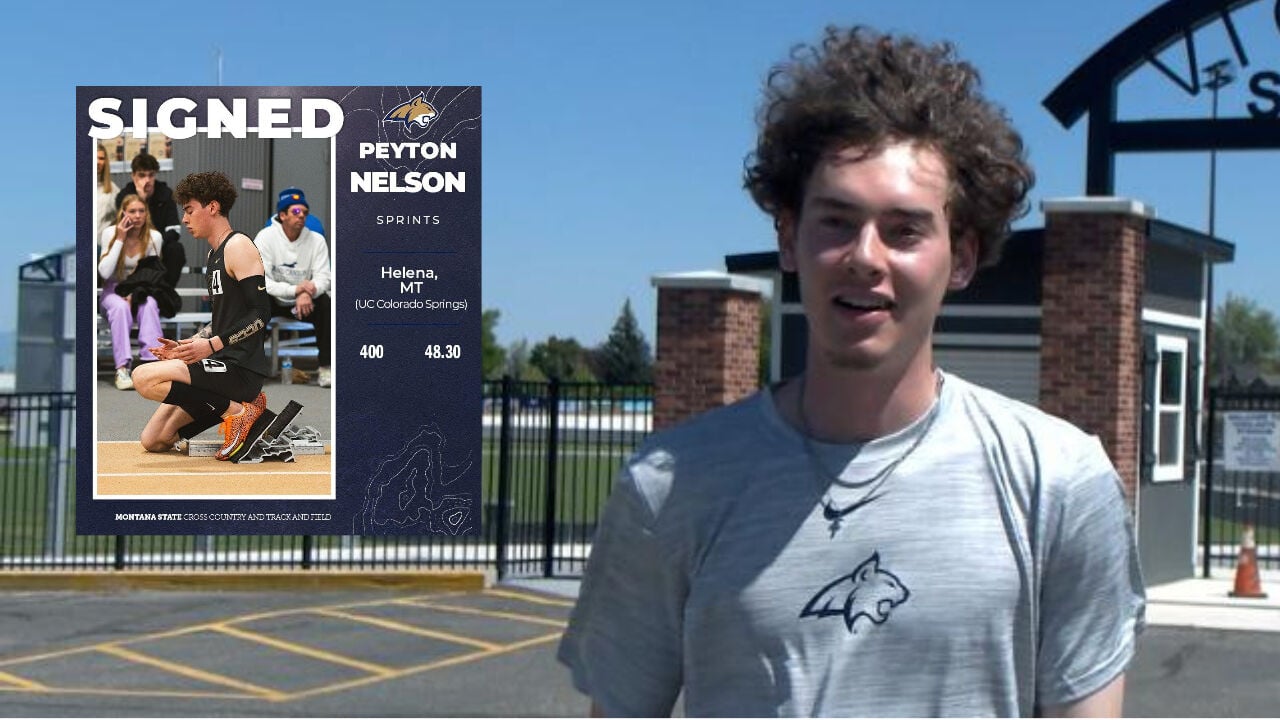
“It’s amazing. It’s been a lifelong dream for me,” Nelson said. “My mom ran track there. She also went to Capitol. Graduated in ’97. So, I think it’s pretty cool to follow in her footsteps.”
HELENA, Mont. – Peyton Nelson, a former Capitol High Bruin, is returning to Montana after a year away to join the Montana State track team.
“It’s amazing. It’s been a lifelong dream for me,” Nelson said. “My mom ran track there. She also went to Capitol. Graduated in ’97. So, I think it’s pretty cool to follow in her footsteps.”
Nelson previously ran track at the Division II level with the University of Colorado-Colorado Springs. There, he achieved success as a national qualifier and conference champion in the 4×400 meter relay.
Nelson has embraced the mindset of betting on himself, a philosophy he carries with him literally. “I actually have that tattooed on me. I have, bet on yourself on my forearm,” he said.
For Nelson, track is a family affair. His mother ran at Montana State in the late 90s, and his younger brother Cooper recently broke the Capital High 100-meter record.














































































